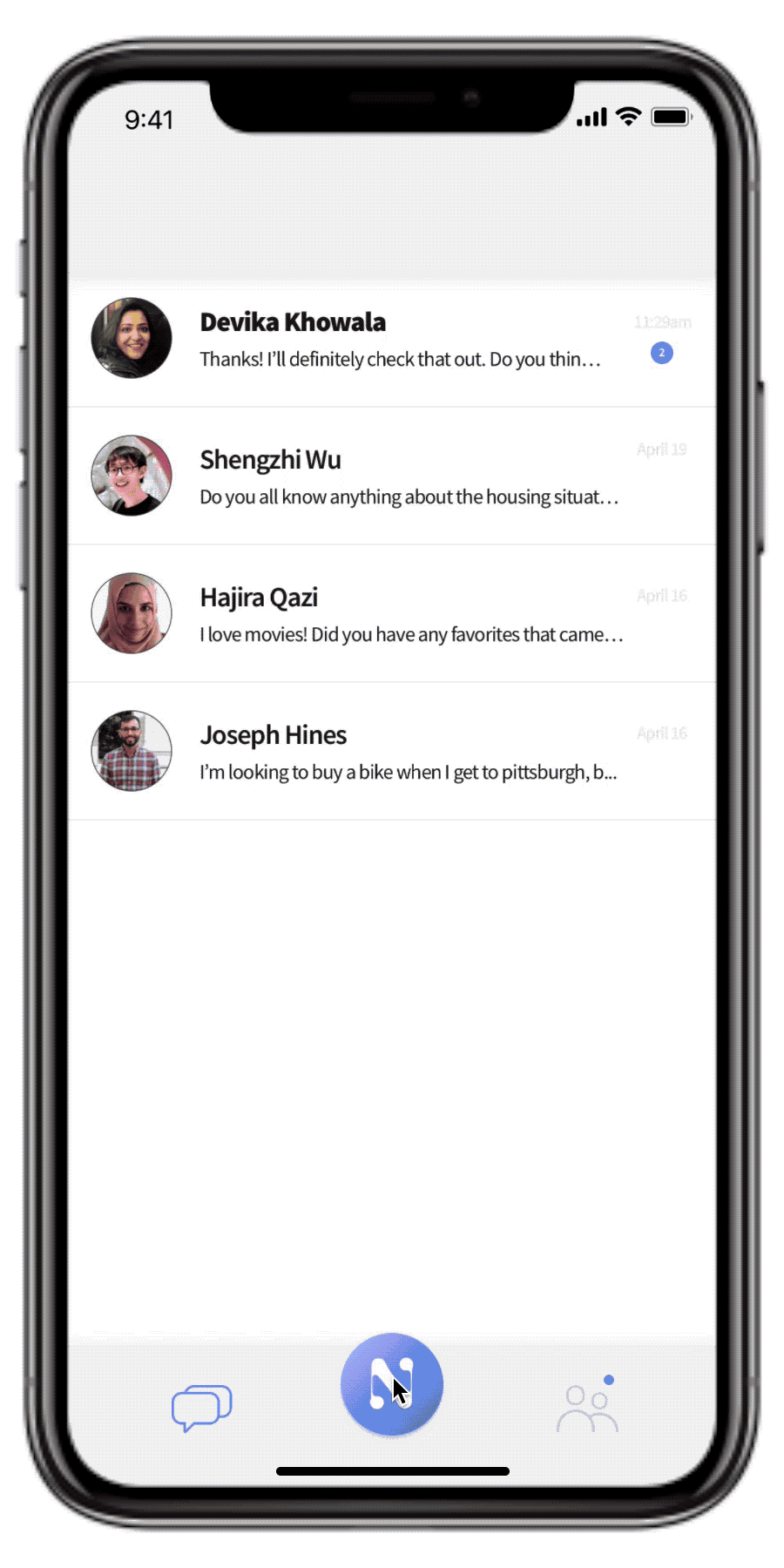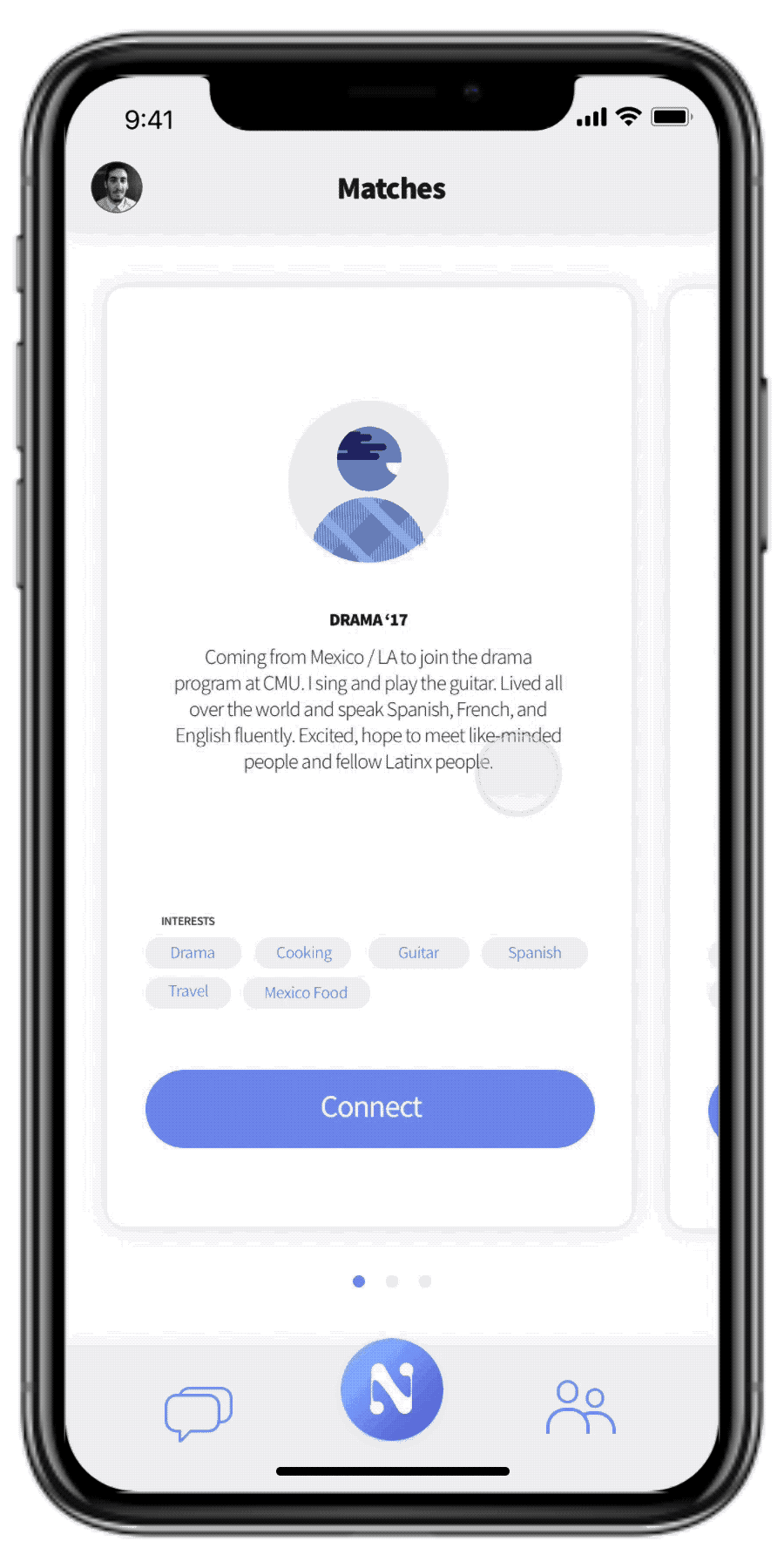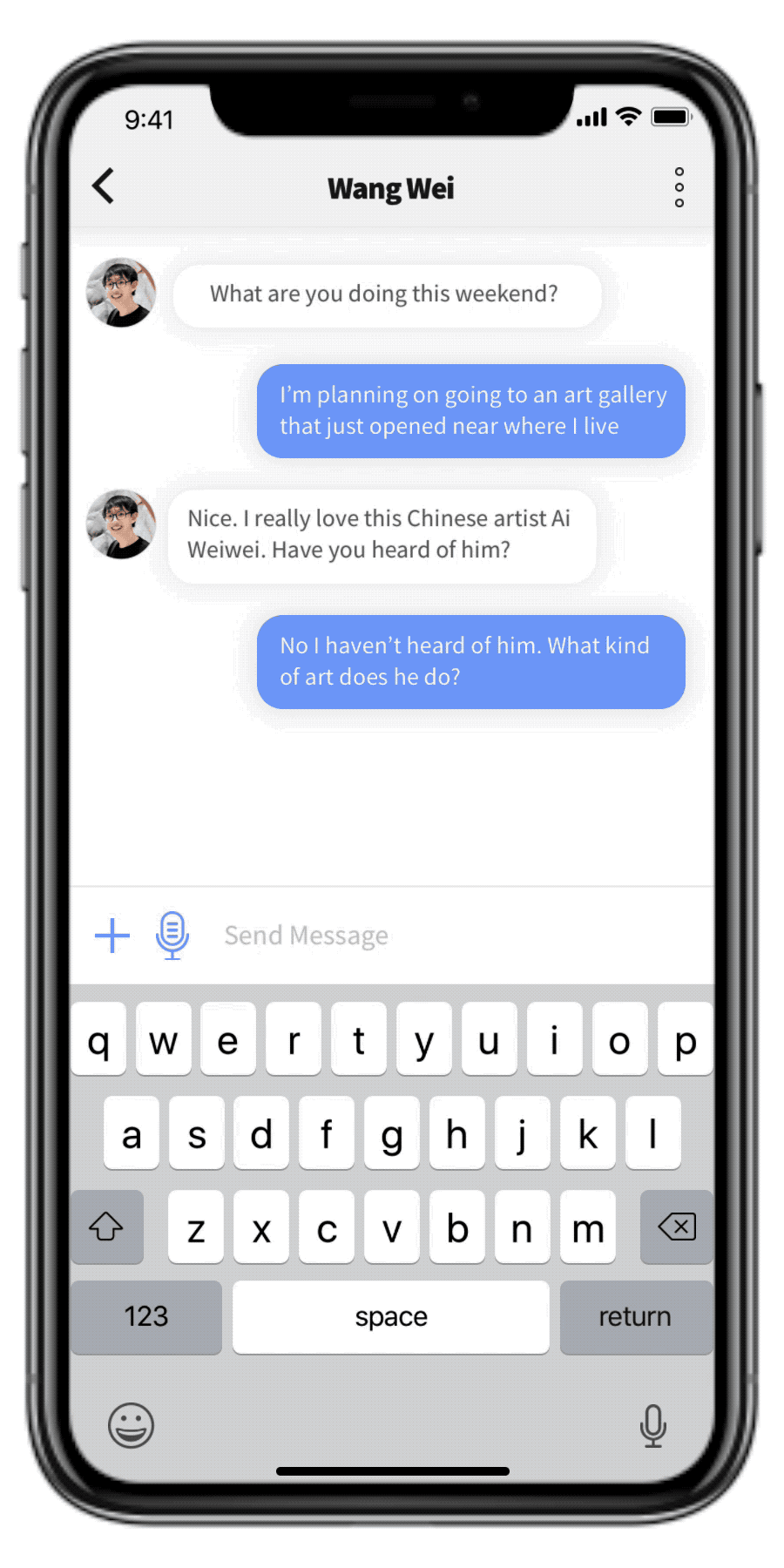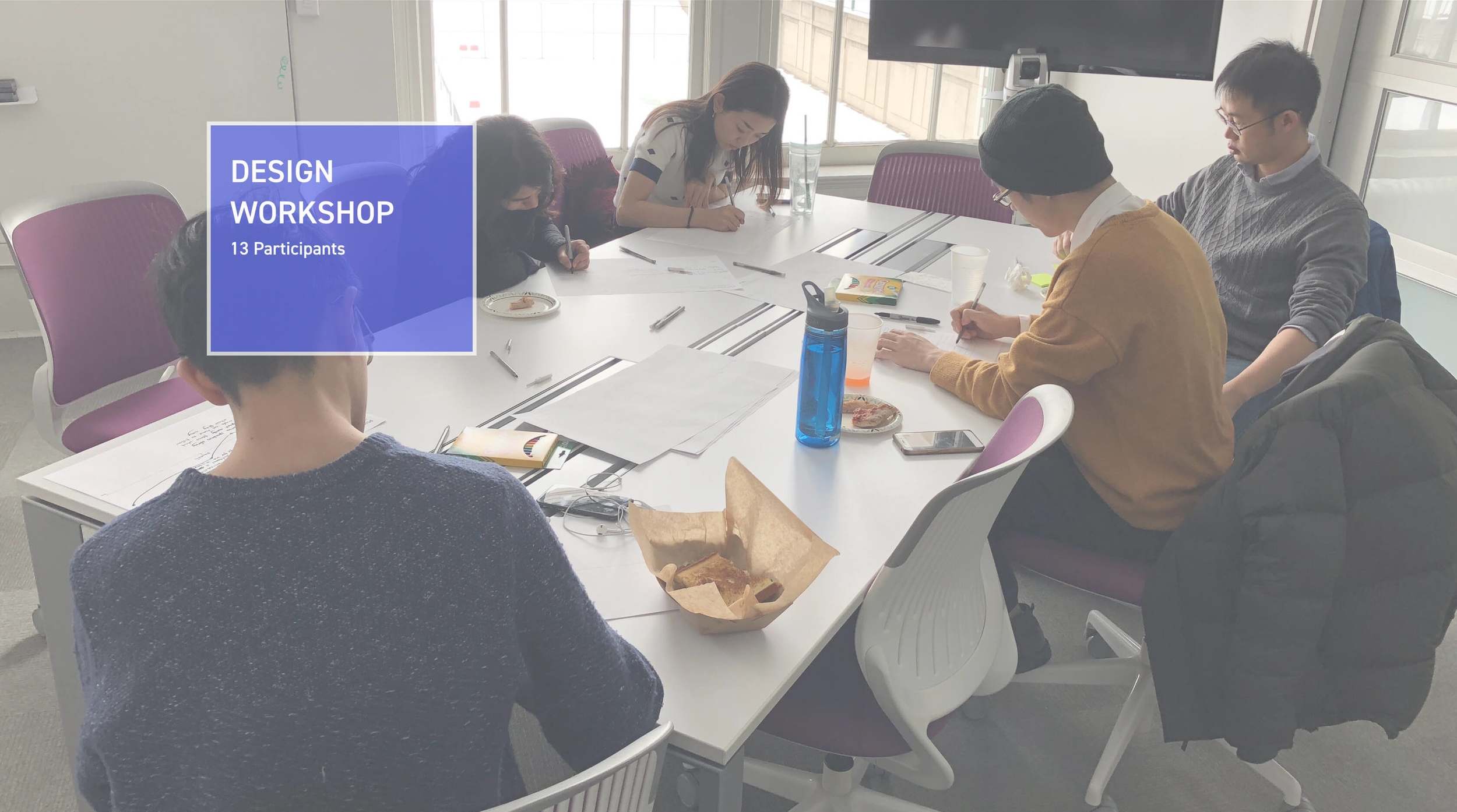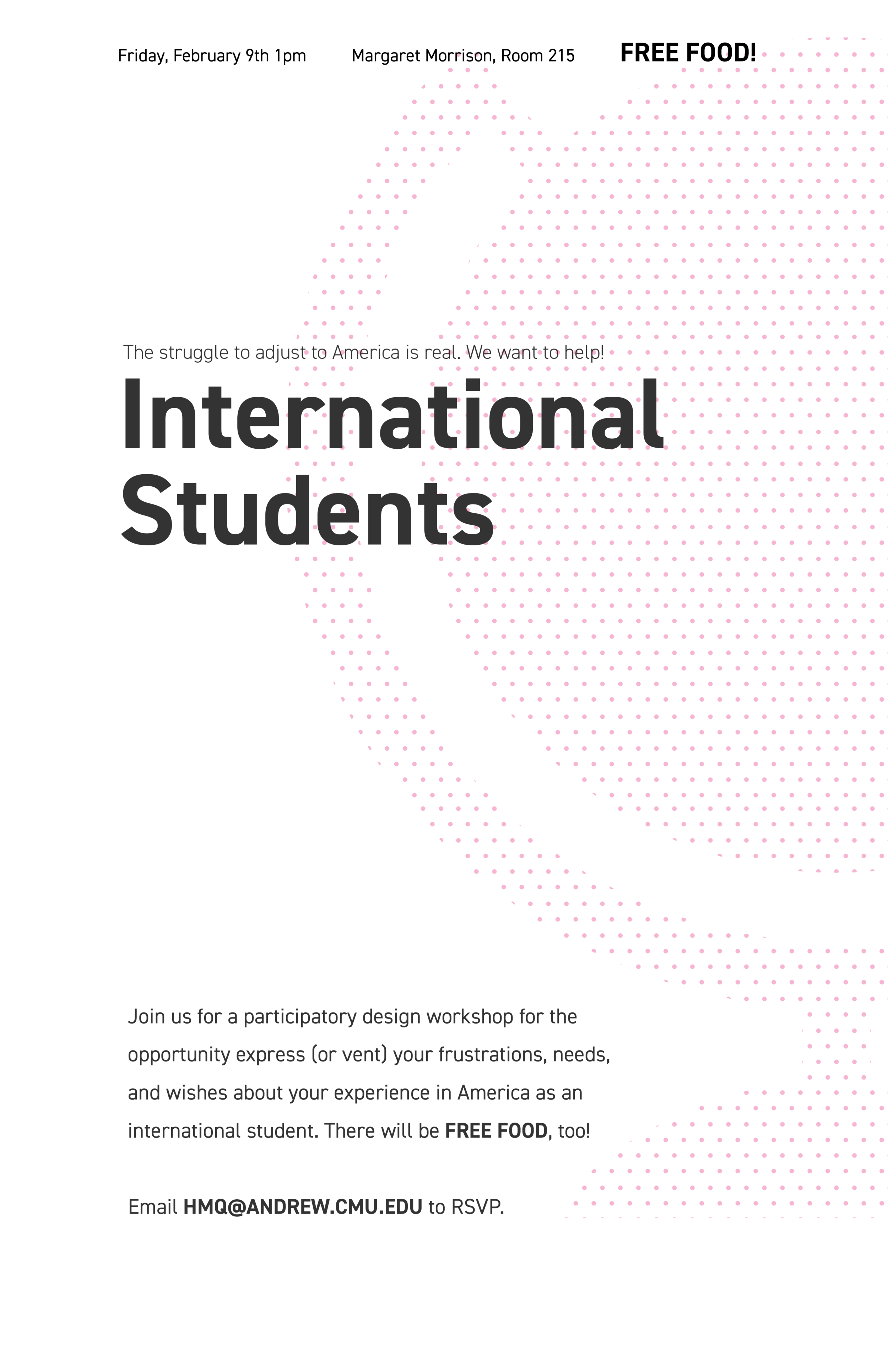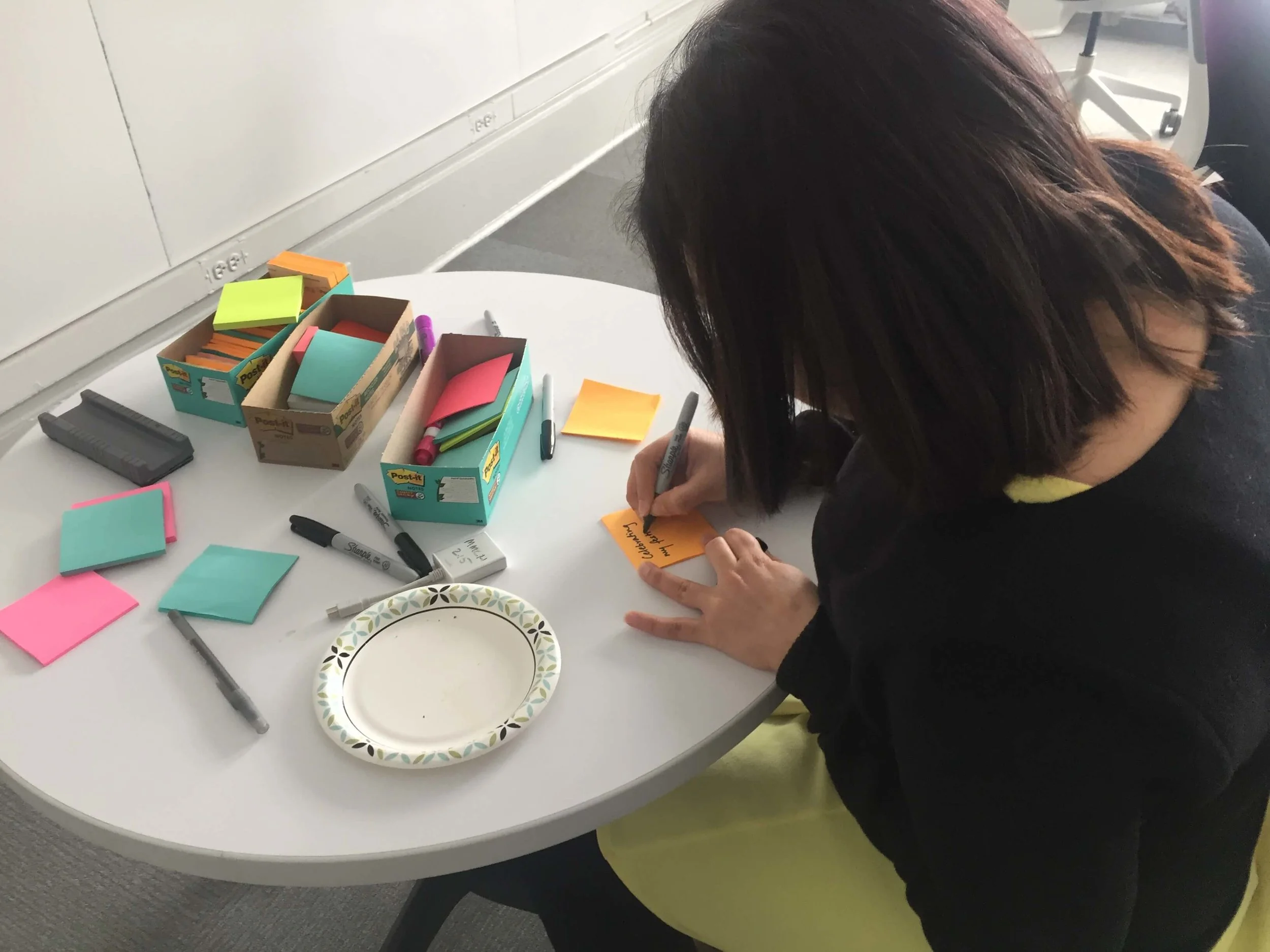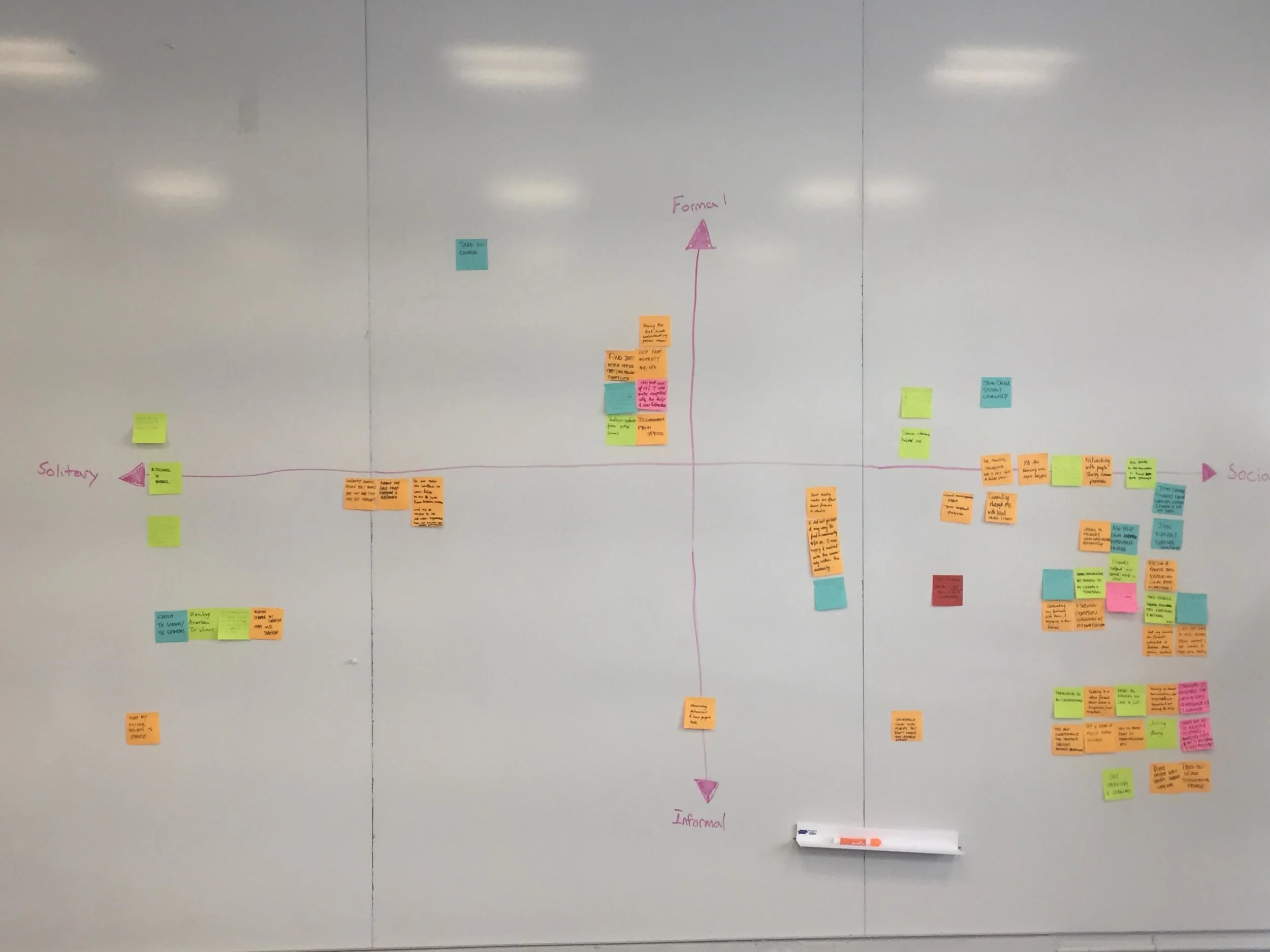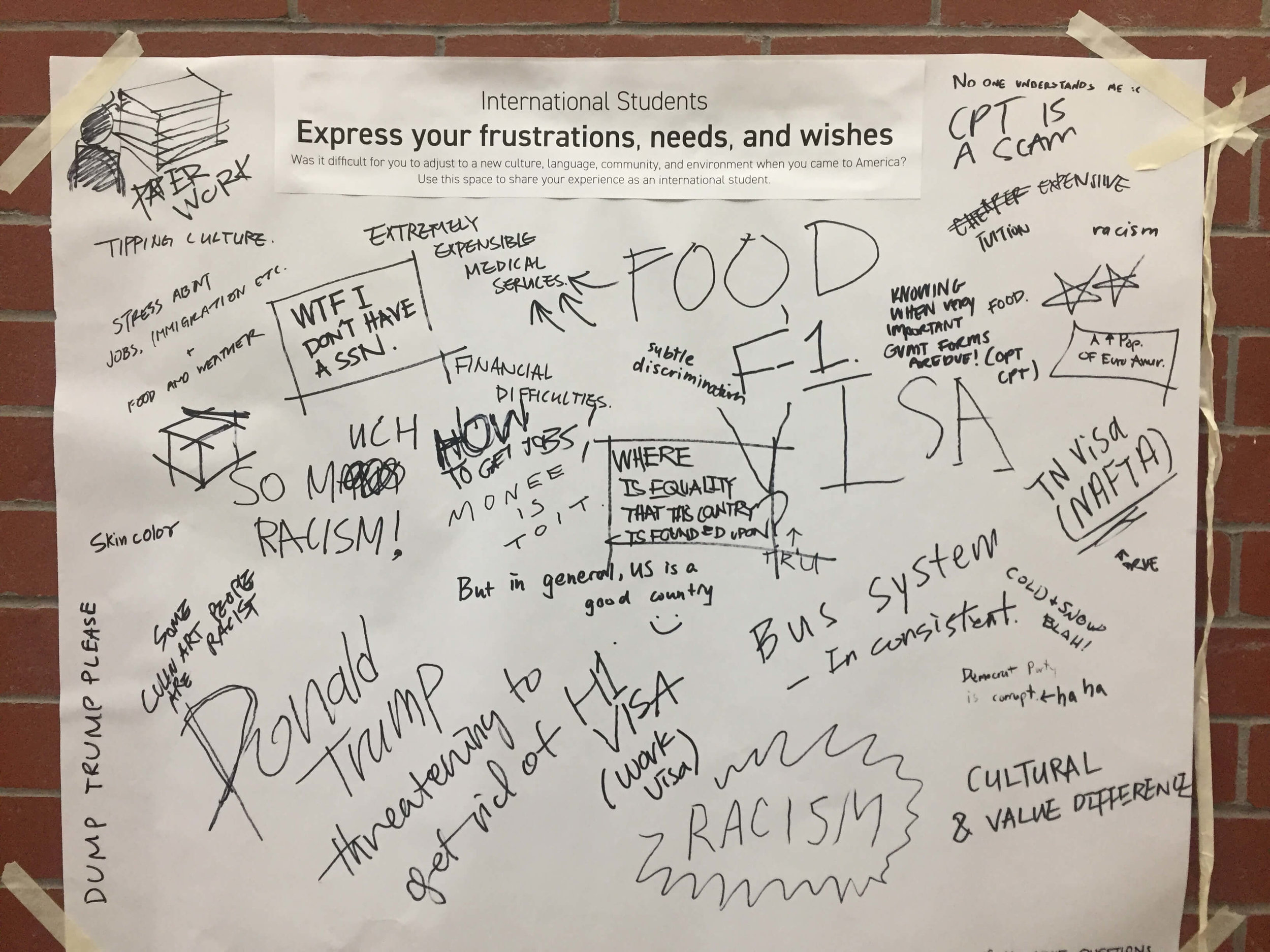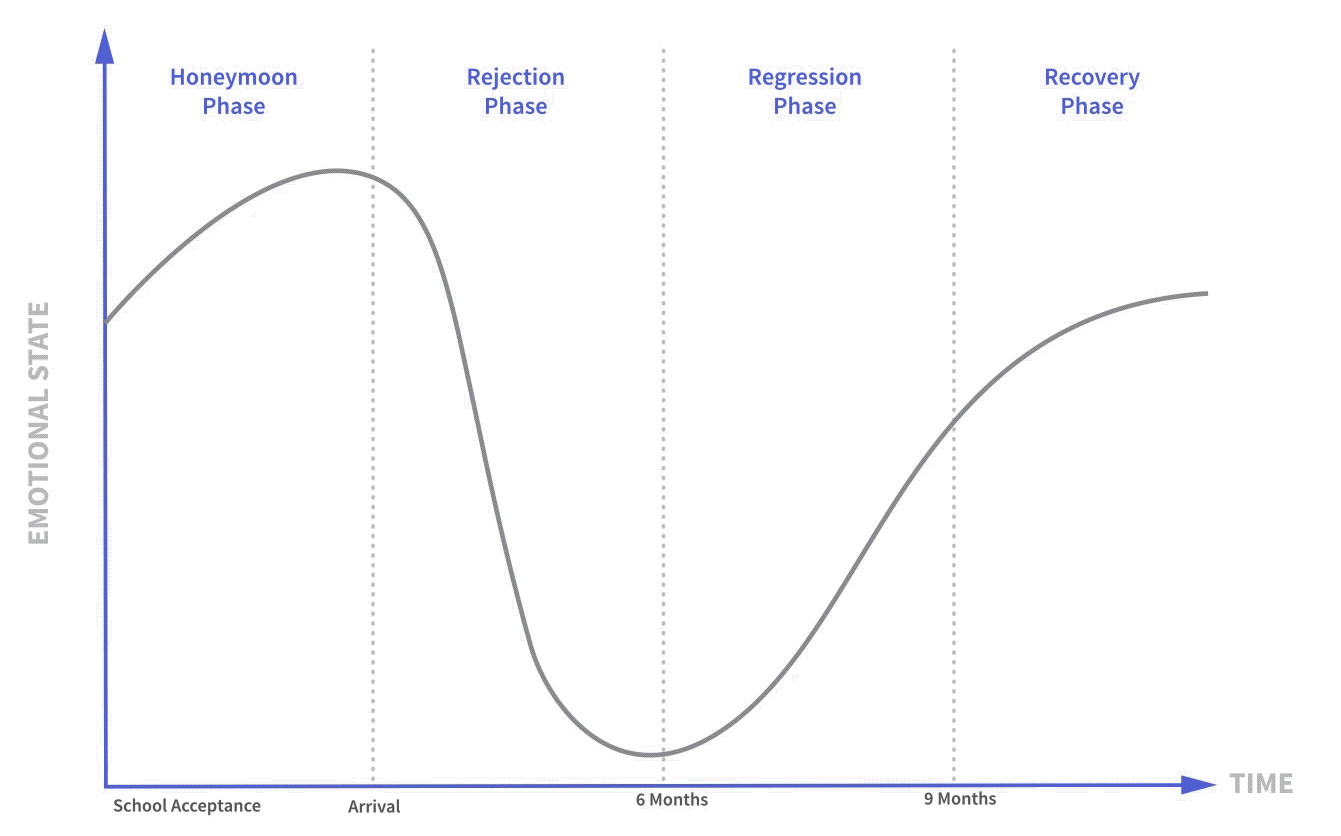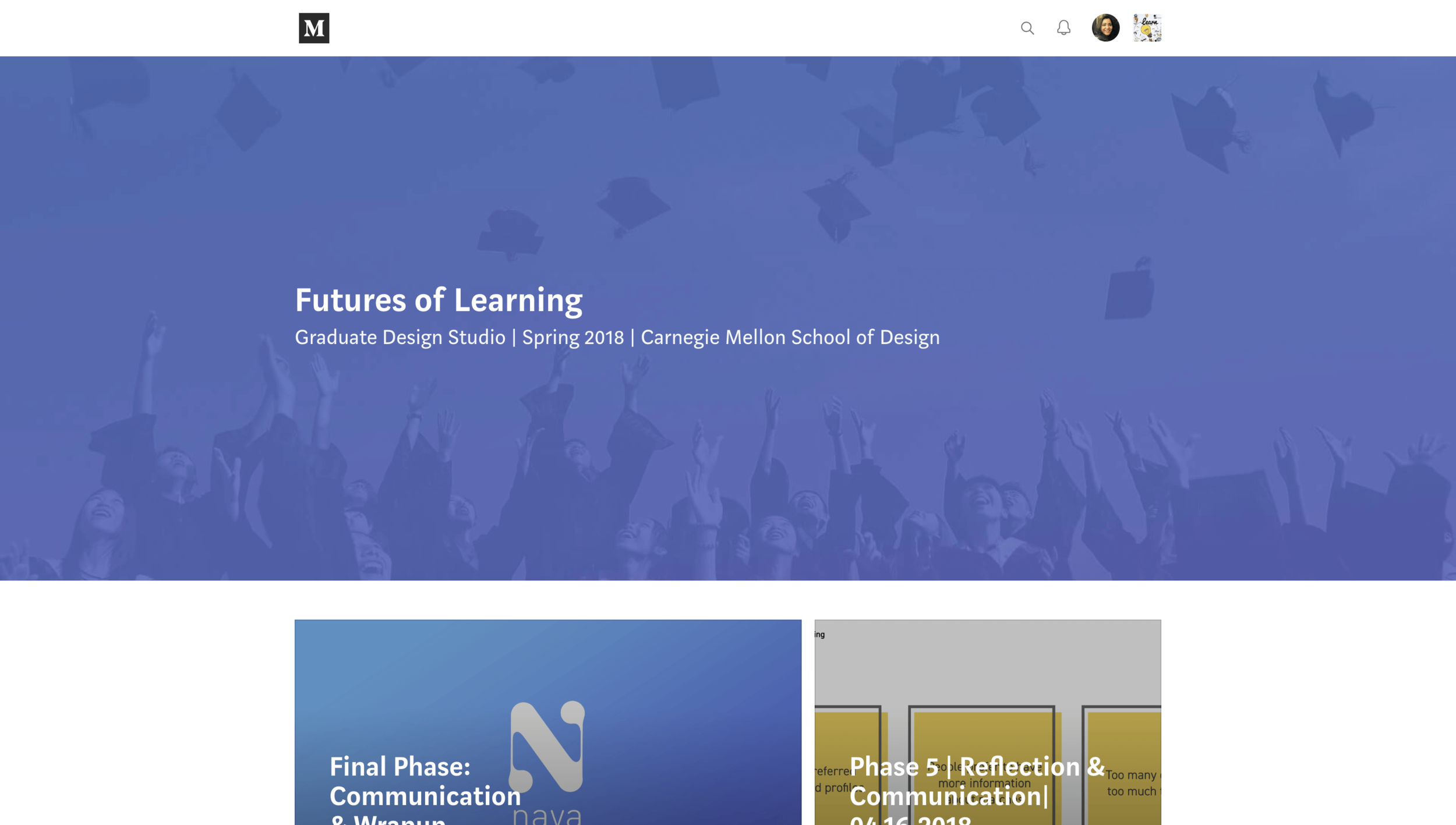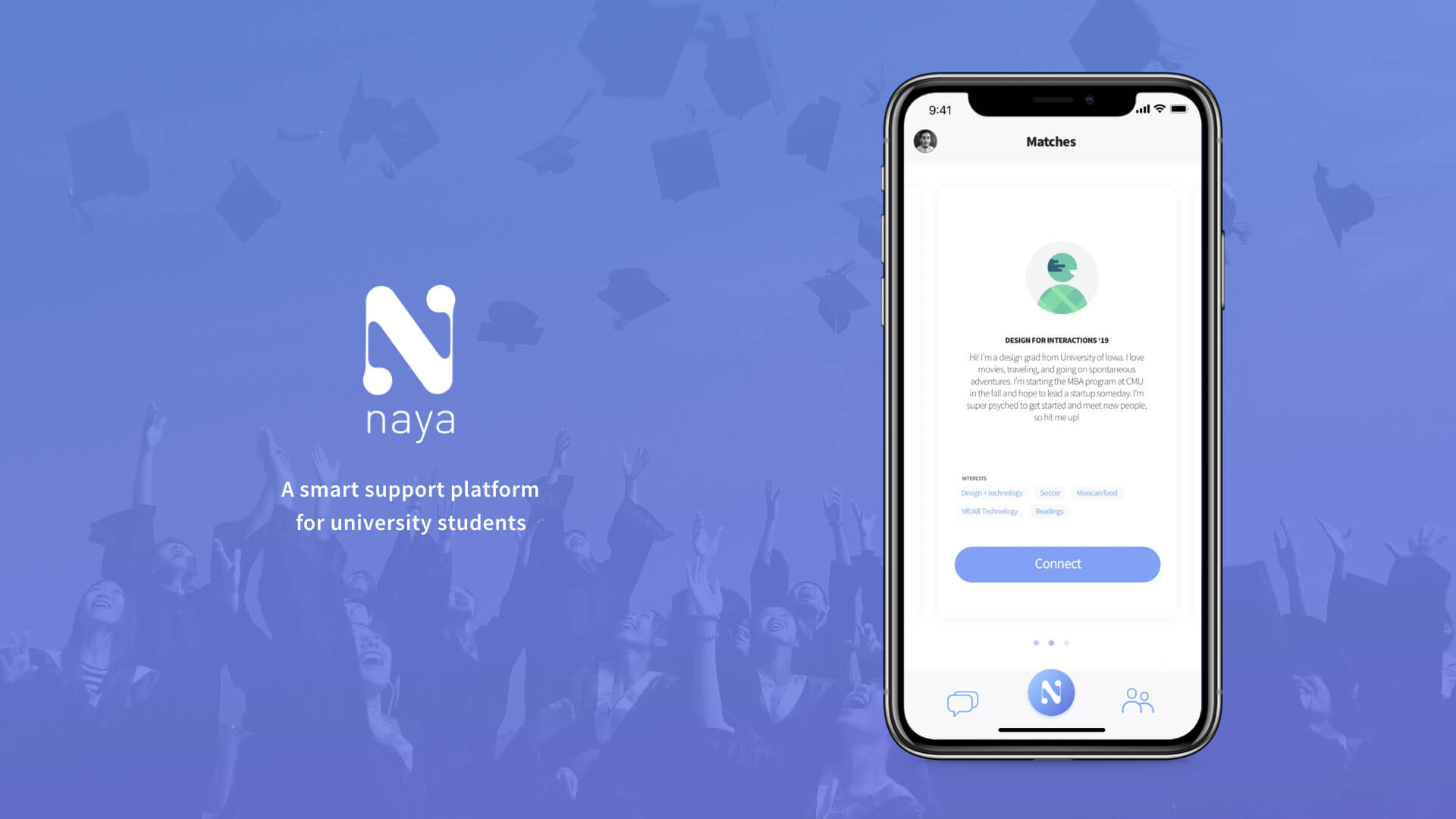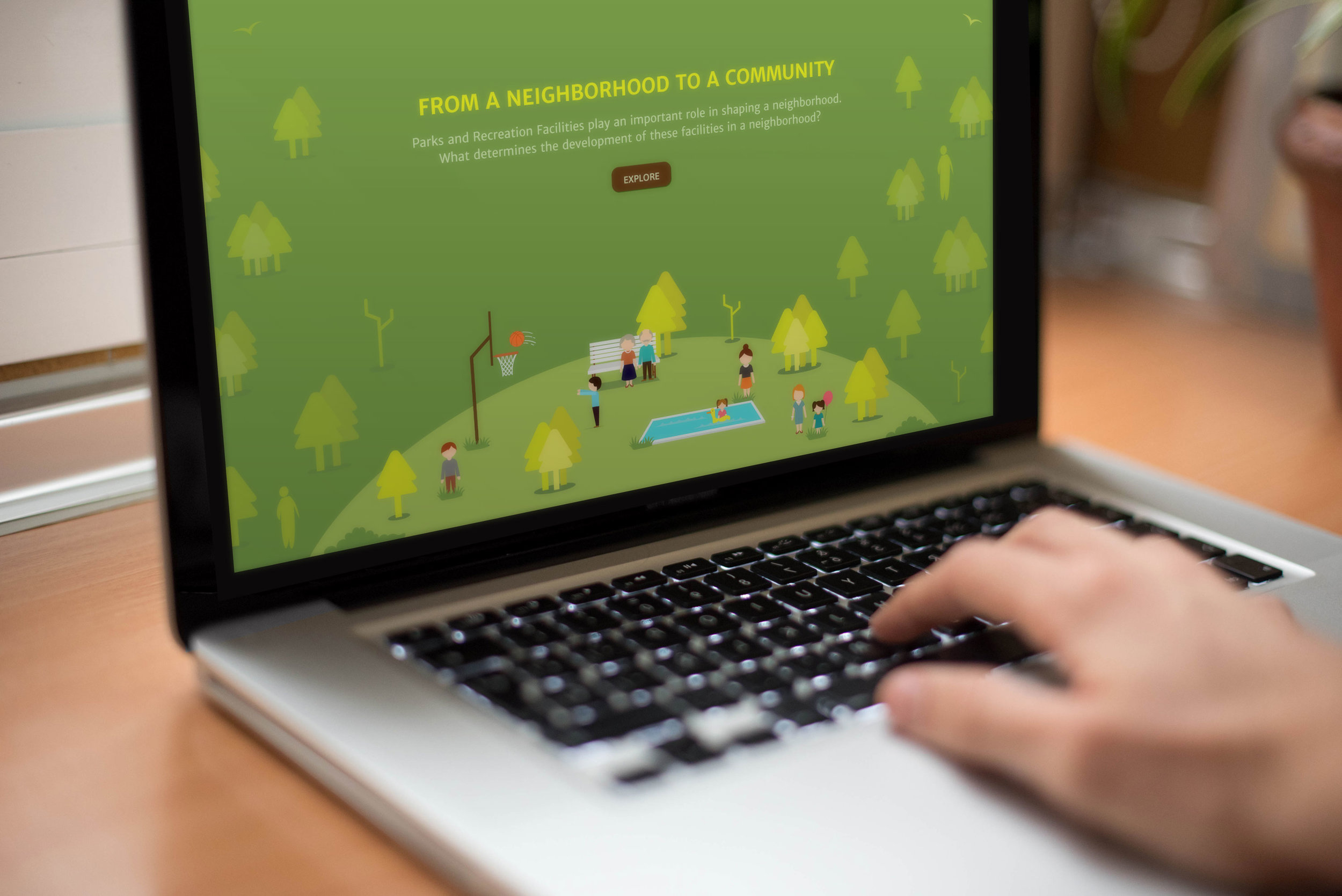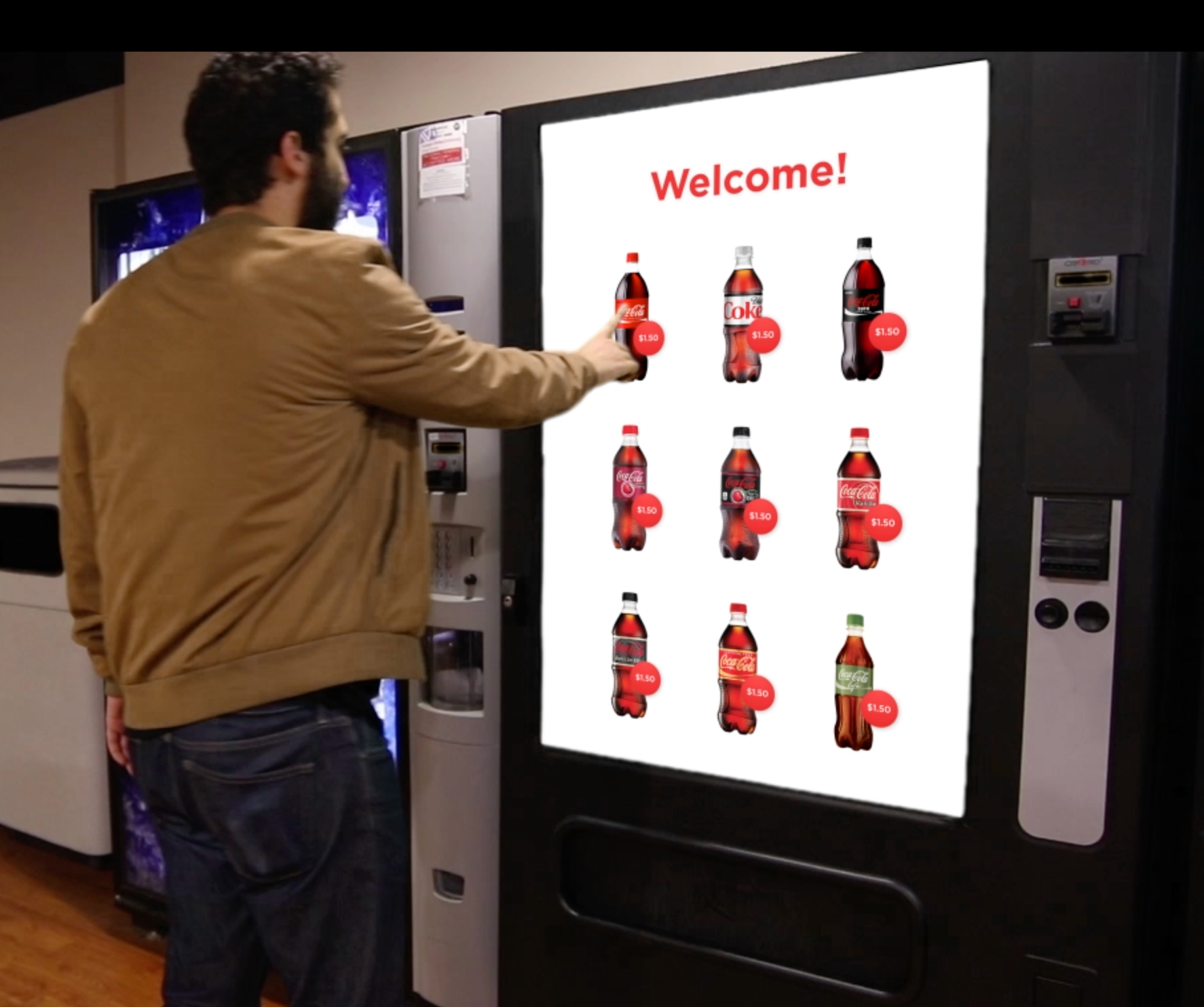Naya: an intelligent support platform
ARTIFICIAL INTELLIGENCE | IMMIGRATION | INTER-CULTURAL LEARNING |
DESIGN RESEARCH | UX DESIGN
OBJECTIVE: Design a product, service or solution that demonstrates the value and differentiation of AI in learning, teaching, and education.
NAYA: An AI-empowered learning and support platform for International students to ease their transition to America.
DURATION: 16 weeks
MY ROLE: Design Research (Workshop planning and synthesis), UX Concept direction, Onboarding Wireframes and illustrations, Visual Design
TEAM: Zach Bachiri, Hajira Qazi, Shenghzi Wu
#THE CHALLENGE
Immigrating to a new country is a rich, immersive, but often an emotionally taxing experience with a steep learning curve. Especially for those starting new jobs or school in an unfamiliar country, there is a lot that has to be learned very quickly. This project explores if and how can AI be leveraged to make this acclimation process easier?
Why should one care?
Research Insights
(For a more detailed design research process, scroll further down)
#PROPOSED SOLUTION
Naya is an intelligent networking and support platform that connects incoming college students to create an inclusive campus experience and build a support network
(Runtime 1:48 mins | Caution: It might get loud)
Product placement
Naya is a product offered primarily to universities. Using the various features of the product, universities can gather their incoming students on a single platform, share necessary information, and provide a space for creating a community.
Application Features
Onboarding
Creates expectancy of a positive social experience and cultural learning with their classmates.
Introduces NAYA and its benefits
Users fill out their profile and preferences (which is used for matching)
Briefly explains the main features
The goal of inter-cultural learning is not explicitly stated, but the product is offered as an experience of joining a cohort where students get to be a part of an international community and learn from one another.
Naya - Bot Assistance
Naya is a virtual assistant that acts as a unified resource for all university-wide information.
Eases workload from the school’d international education office.
Provides 24X7 support with school and immigration related queries
The logistical information supplements the inter-cultural learning exchanges on the platform.
Matching
Matching is a way to foster connections between incoming students.
Provides anonymized matches based on mutual interest
Remove implicit bias in connections and facilitate relationships between international and American students
Once connected, users are able to see more detailed information about the other person.
Through matching, the goal is to try to remove the inherent bias of primarily connecting with people who share the same cultural and social values.
Chats
Encourage international and American students to talk about topics that foster bidirectional inter-cultural learning.
Suggestion chips supplement and scaffold ongoing conversation with topics not on the radar of incoming students.
Suggestion chips allow the user to maintain control over the conversation.
Acts as a feedback system for the AI to learn from
Bookmark
Allow users to save and review information to refer to later.
Users can save the conversation that they find interesting or useful for reviewing later.
Automatically categorizes the conversation into different topics, so it becomes easier to find and refer to later
Acts as a feedback system for the AI to learn from
How Naya learns and makes recommendations
Pre-launch, Naya will need to be trained on data sets that teaches it to draw connections between topics based on relevance. In the Beta stages, as students act upon its suggestions and provide feedback, the new data would help to improve the algorithm which would enable Naya to make smarter & relevant suggestions.
#DESIGN PROCESS
Defining the Research Territory
This projects explores the future of learning in an AI enabled environment. We narrowed our scope to focus on inter-cultural learning for immigrants. In addition to hosting refugees and international students attending its many universities, the tech industry and growth of Pittsburgh has brought more immigrants to the city over the past few years. This provided us with a great opportunity to learn the nuances from the immigrants and co-design with them. We were curious to explore if and how the evolving technology could be leveraged to aid the acclimation process.
Scoping Framework
We started this project by building a Territory Map. It allowed us to build a landscape of our research territory, of what immigrants need to learn and how they learn to adjust to a new cultural and social environment, as well as, speculate on possible AI based interventions.
EXPLORATORY RESEARCH
The Exploratory research focused on learning about the immigrating experience to America and identifying pain points. Methods: Questionnaire (n=15), Interviews (n=6), Graffiti wall, Literature review, workshop (n=13), Affinity mapping
In the second phase of our preliminary research, we decided to focus on International students as our primary stakeholders and conducted a workshop with them. A vast part of our findings came through the various qualitative research methods we employed to learn about the acclimation experience of our participants. Workshop: Letter to the past self, Journey Map, Storyboard, Post-it Survey
How might we use artificial intelligence to aid inter-cultural learning for international students relocating to the United States in the pursuit of higher education?
Research Goals
Design Workshop
Workshop Material
Opportunities
As a result of our exploratory research, we identified four areas as opportunities to assist students as they immigrate to a new country. We used affinity mapping to identify the main pain points and the existing learning and support systems.
Challenges
Along with opportunity areas, we also recognized three challenges surrounding our problem space.
GENERATIVE RESEARCH
Our goals for this phase of research were to get insights on pain points, identify common themes in difficult scenarios and collectively gather creative ideas that could inform our design concepts. Methods: Co-design Workshop (n=5, n=12), Role-playing, Magic Device
Research Goals
Co-design Workshop
For the co-design workshop we developed a set of common painful interaction scenarios we identified from the exploratory phase. We paired up the participants to ensure that each group had an international and an American student. The participant were then asked to role play the given scenario and work together to build a solution that would best address their problem.
Key Insights
Participant comments and follow-up interviews helped us to gather insights from this phase.
A bi-directional inter-cultural learning process makes the acclimation process for immigrants easier and more effective than unidirectional approach.
International students try to avoid unfamiliar situations they anticipate to be difficult.
Having a supportive community is important to the mental and emotional wellbeing of international students.
GENERATIVE II
In this phase we developed storyboards for initial concepts and speed dated them to evaluate. Method: Storyboarding & Speed dating(n=5), Persona Creation
Initial Concepts
Based on the pain points and opportunity areas identified in the exploratory research and insights drawn from the generative phase, we developed some initial concepts where we believed AI could intervene in a meaningful way. We speed dated three story boards with 6 participants.
Insights
After speed dating the various concepts, we decided to work further on the concept of developing a social platform that used AI to scaffold conversations and facilitate inter-cultural learning and development of a support system.
EVALUATIVE RESEARCH
In this phase, we focused on evaluating the features of our platform with research participants and made iterations based on the feedback. Methods: Wizard of OZ (n=1), Conversation Analysis(n=19), Interview(n=1)
Conversation Analysis
To further evaluate the desirability of our concept, we matched incoming international students with current students and with incoming international students . We encouraged them to engage in a chat using Facebook messenger. After 5 days, we reviewed the conversations to find any patterns of breakdowns and opportunities for intervention.
This exercise further supported our insight that there is a gap between what International students' need to know and want to know before their arrival.
Follow-up Interview
The University Office of International Education is the main point of contact for International students. We met with the staff at OIE to learn about the resources they provide for cultural acclimation and adjustment to a new environment. We were also trying to evaluate the viability of our concept.
We learned from our research that there is a big dip in emotional state when international students arrive in america and are forced to face all of the difference between their culture and America’s. So we chose to intervene before arrival in hopes of lessening that dip. By helping international students build a network and learn about the cultural differences before arrival, they will hopefully be more prepared and aware.
Platform Development
Based on the findings from our initial research and the feedback from the evaluative phase, we started with developing the basic architecture of our platform.
features development & testing
We developed a low-fidelity prototype to get user feedback on its basic features. We had several ideas for how the features could be designed and testing the options with users allowed us the understand the strengths and weakness of our design. For this, we conducted one-to one interviews where we presented each concept and ask them to list the things that they liked/disliked about the concept and why.
Matching Experience Options
With these options, we trying to understand the requirement/ desirability of the various elements in the interaction. We were trying to investigate how many match options do users prefer; how much information is required for a user to generate interest in a match and initiate conversation.
Agent Intervention Options
Feedback Feature Options
Feature Testing Insights
If interested, read the Medium Publication detailing the complete process of this project.
OTHERS PROJECTS










